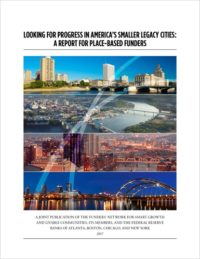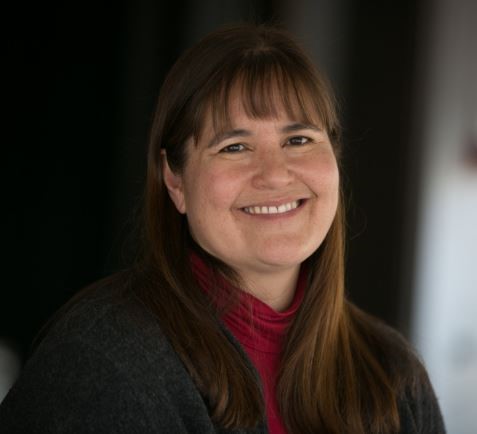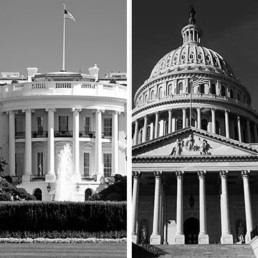The Art of Possible with Danville Regional Foundation's Karl Stauber
By Alicia Kitsuse, Director, TFN's Inclusive Economies

On July 31t, Karl Stauber will close the door on a career in philanthropy that has spanned more than four decades. In that time he has held positions at the Mary Reynolds Babcock Foundation, the Needmor Fund, the Northwest Area Foundation where he served as President for 12 years, and as a contractor to major corporate giving programs and community foundations. In his current post as President of the Danville Regional Foundation in Danville, Virginia, a former textile-manufacturing town and center of the tobacco trade, Karl became the driving force behind TFN’s smaller legacy cities study tour, and co-authored the resulting report Looking for Progress in Smaller Legacy Cities: A Report for Place-Based Funders. On the eve of his exit from philanthropy, I sat down with him for a candid conversation about the state of the field, and what he’d like the rest of us to know.
–One of your contributions to community revitalization practice had to do with philanthropy’s role in connecting the “dual arcs” of economic growth and economic opportunity. Building on that metaphor, what do you see as the big arcs in philanthropy during your career, and what is it that gives you the most hope for the field—or the most cause for concern?
I’ve spent 45 years in philanthropy, and so much has changed. I was probably 25 when I went to my first Council on Foundations meeting in Chicago in the 1970s, and I was struck by how white, how male, and how old the attendees at that conference were. There wasn’t even a black member of the band they’d hired for the reception. It was a bunch of white guys trying to play New Orleans jazz. When I go to a large gathering now I’m struck by the great increase in diversity: It’s a much younger population, there are people of color, and there are a significant number of women who are in leadership roles of one sort or another. So, there’s been an arc of diversity, if you will, in terms of who’s in the room.
What there’s less of than I would hope is diversity in world view. Philanthropy as an institution is dominated by elites, and in many cases it’s most comfortable working with elites. When you look at who foundations make grants to, it’s often people that are like us. Not necessarily racially, or in terms of gender or sexual orientation, but people that have gone to elite institutions, who have gotten multiple degrees, people that work for institutions that are set up to manage complex accounting requirements and those types of things. So, for all the progress we’ve made in diversifying who’s in the room and the types of questions that get asked, there’s a form of structural privilege that still exists within philanthropy that I find very challenging.
Do you see that remedying itself over time with the progress of greater diversity, or is an intervention necessary, and what would that be?
I think having different people at the table is very important and necessary, but not sufficient. To create the change we need, we’ve got to outside of our own comfort zones as a field and start being open to seeing and interacting with the world very differently. That’s as true for the foundation I run now as it is for the Gates Foundation.
Danville Regional Foundation is going on 14 years old, and in the first 10 years we were most comfortable working with our local version of the elite institutions-- the community college, local governments, the United Way. Those are all important institutions, but in the last two years we’ve really started to engage grassroots communities in a way that is testing our ability to see the world differently. We’ve targeted three neighborhoods in our community that experience the greatest concentration of adverse outcomes and we’ve begun what will be a 10-year process of engaging the people in those communities so that they decide what ought to be happening in their neighborhoods rather than having city government, or the school system, or some other institution decide. And frankly, it’s a very different kind of work. It’s a different timeline. If you provide three-year grants you’re not going to see enough change to then have the confidence to make the next three years of grants. We’ve had some people in power positions who clearly don’t like what we’re doing. But if place-based funders are willing to take the heat from local elites, I think that they are likely to be where progress will come from.
Earlier in your career at the Needmor Fund you were involved in social justice organizing, Where you see organizing fitting into today’s community and economic development landscape?
With the political polarization of the last 10 or 15 years I think it’s gotten easier to organize in opposition, but harder to organize in proposition. In my observation, opposition organizing has been increasingly used by elements of the left and the right to further polarize communities to advance a political agenda rather than trying to build common good in communities. Who is standing up and saying, “Okay, this is what progress looks like, this is what the new social contract looks like”? I don’t hear those voices at the community level and I sure don’t hear them at the national level with the frequency that’s needed. Going back to what you and I and others worked on several years ago, philanthropy—particularly place-based philanthropy—has a real opportunity to be much more intentional about understanding the arc of opportunity and the arc of growth, and how you connect the two so that the vast majority benefit, rather than seeing growth and opportunity as unrelated or even oppositional.
So, do you see local communities as being the source of the new social contract?
I see a lot of evidence of that, particularly in local communities that have undergone some hardship and have had to try something fundamentally new, or in communities that have experienced dramatic changes in leadership so there’s an opening to new things. In those types of places I see a willingness to negotiate a new agreement across the middle 60 or 80 percent of the community’s political spectrum. I see a lot more of that at the local level than I see at the state or national level.
So, to close the circle on my question, does community organizing play a role in getting to that new negotiation, that new agreement across the 60 to 80 percent?
I think it absolutely can. It’s a challenge because if community organizers are coming in from the outside and they’re part of a larger, politically driven effort they can actually make it harder at the community level. If, on the other hand, the community organizing is much more about listening to what the people in the community are saying and is community led then I think organizing has an opportunity to be a great contributor.
Having spent the last decade supporting and leading revitalization strategies in your smaller legacy city what lessons you would put in a handbook for your successor?
I’ve actually had this little fantasy of taking SunTzu’s book on the art of war and doing a book on the art of philanthropy; kind of pulling out some of the lessons that I’ve learned along the way and putting them in bullet points. One thing I’ve learned that I think is absolutely critical is that you have to start with where the community is rather than where you want it to be. This is true whether you’re a place-based funder or a national funder or somewhere in between. I think funders too often live in an unaware privilege where we think people will buy into what we want to do and be supportive of it. We think we can buy trust rather than earn it, which is never true. We don’t take the time to understand the community and what it wants. And the way I’ve abbreviated that is, you have to start where the community is not where you want it to be. But to do that you have to really pay attention and be open to hearing things that may be hard for you to hear.
Are there any other bullet points?
A second one is that you have to get communities to look at their assets and see the possible. For example, Danville grew up around the Dan River, but people in our community had become blind to the river’s possibilities. People either saw it as a sewer, or a barrier between the largely African American part of town and the mostly white part of town. The same thing was true of the very attractive, abandoned brick warehouses near the river that were built by tobacco companies.
DRF did two things fairly quickly to show the residents of the city of Danville that these things were assets rather than liabilities. Working with the City of Danville and our local college, Averett University, the first thing was to redevelop one of the warehouses and put DRF’s offices, and Averett’s nursing school, and some other things in it. The other was to support the YMCA in building a world-class facility that faces the Dan River. And, six years later, with a lot of leadership from the City, and a lot of good community engagement, and support from DRF, we’ve gone from 400 to 6000 people living in what we now call the River District. DRF and the City invested $25 million in the district, and investment by the private, for-profit sector is approaching $150 million. The other key indicator for me is that we now have developers from Danville who are buying properties with their own money and have the know-how to redevelop them. In the beginning, all the investment and development was by out-of-town firms.
So, there’s been a major shift, and it started with showing people the possible. DRF took Danville’s whole city council to Greenville, SC, which is another old textile town. We’ve taken groups of community people to look at various excellent parks around the country. When we were looking at health equity we took about 50 people to Louisville, KY, to look at what they had done. Instead of asking people to imagine, DRF asked people to go see, and helped underwrite that. And then they came back and became the advocates of the possible, rather than it just being the Foundation.
You’ve given a couple of examples of place assets that you’ve been able to build on and build up. How do you do the same thing with people assets?
We’ve done a couple of things in that regard. One of our senior program officers spends almost all of her time working in our three focal neighborhoods, and a large part of what she’s trying to do is to help develop the leadership in those neighborhoods. We’re not deciding who the leaders are, because that would be inappropriate in a whole bunch of ways, but we’re providing a lot of developmental opportunities. The first group we started with was a mothers-against-violence group called Mothers Stronger Together. They are all women who live in the neighborhood and have lost one or more children to gang violence. It’s a very tough group, a very motivated group. Around them we’ve created an initiative called Opportunity Neighborhoods, and we see spending 10 years working the group in those places.
Part of what we’ve learned is if we’re going to engage neighborhood residents, they have to see it being in their self-interest, and they have to experience the possible. For example, we created a small grants program called Make It Happen. If someone wants to change something in their neighborhood, we can make up to a $25,000 grant to them and we can do it in a day or two. They might refurbish a park in their neighborhood that’s been abandoned, or do a community garden, or hold a neighborhood night out type of event. As their ideas emerge we learn from them and help them find the resources necessary to experience some success. If people believe that they have the ability to make change they are much more likely to make change.
Another example is the local health collaborative, which is organized around community health workers who go into people’s homes and provide assistance. The health workers have become a great source of intervention for someone who, say, has COPD and is living in housing that has mold. They will not only make sure the person is taking care of the COPD, but they’ll also help them move into different housing or get their house treated. They also help people find jobs—all sorts of things. Our public housing program said they would pay to train anyone who lived in public housing who wanted to get a community health worker certificate. And so, about 40 people living in DRF’s three target neighborhoods have gotten training, and we and others are now providing additional support for the program. It’s a really been an important way of building human capacity within communities that have traditionally been seen as problems, not as opportunities.
To circle back to the principle of starting where a community is, can you say something about the through line between starting where the community is and how DRF assesses the impact of its grantmaking? Do you follow the community’s metrics of change?
How you get funders to engage in honest observation and see that as being more valuable than traditional metrics in some cases is something that we’ve struggled with. One of the challenges that I see in the field of philanthropy is that we’ve become so focused on metrics that are meaningful to university types but not so meaningful to community types. And, in many ways that makes it harder to listen to communities.
When we talk to Mothers Stronger Together, their first metric is fewer kids getting killed or injured in the community. Their second is that gang activity is in decline. Now, that’s a very hard thing to measure, but the mothers talk about how that’s changing. We don’t then ask “well, what’s the measurement for that?”, because that’s putting it into our language, not theirs. Another metric I hear them talking about is whether the schools are working for their kids. We can look at standardized testing, graduation rates, those types of indicators, but they are not particularly what I hear people in community talking about. Instead, I hear them talking about “Is my kid safe there? Are there teachers that are trying to help my kid succeed and get ahead? Are we organizing the structure of the educational experience so that kids who are from low- income families and are in low-income schools have some kind of access to special programming that might help keep them in school?”
I’m of the opinion that change is often observable before it’s measured. We talk about all of our work taking 40 years, and hope that our investments cut 40 years to 30 years. But we’re not looking for investments that cut 40 years to 10 years, because we think that’s a false promise.
Looking back, are there high points in your career that you would call out?
In the last 12 years I’ve become a great fan of place-based philanthropy. In Danville, I’ve had the chance to engage in what I call retail philanthropy. I’ve had people walk up to me on my front porch on Saturday night and talk about why we turned down a grant request. I’ve had people stop me in Food Lion, our local super market chain, and want to talk to me about a grant proposal. And I’ve really come to enjoy and admire the short feedback loop of place-based funding. When we do something that certain groups in the community don’t like, or do something that produces real impact, we hear about it pretty quickly. And when we do something that the community doesn’t understand we hear about it and take that as an opportunity to explain our point of view. I don’t know that it’s easier, but it’s more productive to be an agent of change in the place that you live than in a place that you get off the airplane to visit.
Early in your career you worked at the Department of Agriculture, and I know you plan to pursue research on rural revitalization strategies when you leave DRF. Is there something in particular about rural places that calls to you?
I grew up in a little town in North Carolina and worked on farms as a kid, but in my lifespan we’ve come to act as if rural places no longer exist. In the process, I think the unintentional biases that disadvantage rural communities have become more powerful. Maybe it’s the contrarian in me, but as a fundamental issue of equity I want to see people who live in rural communities have similar opportunities to people that live in urban and affluent suburban communities. There’s a mal-distribution of opportunity in the country that, in addition to race and gender and other things, is geographic. We used to care about that, but in the last 50 years we’ve largely stopped caring. And because of that rural people feel more and more left out—they feel they’ve become the “other.” And I think that’s bad for the country and bad for democracy.
Before we started this interview you mentioned you have competing impulses as you’re winding down at DRF, and one of them is to stir the pot and raise some hell. I’m wondering what that would like—what’s the impulse there?
I don’t know how to answer that question so far. Ask me in 6 months.
Similar to other sectors, I imagine that there are lots of people who are exiting or soon to exit philanthropy. Do you have any advice for them?
I don’t have any advice other than being smart and figuring out what you want to do next, and having a plan that takes up some portion of your time but not all of it so you’re open to other opportunities. But that’s probably advice for any of us who are leaving positions where we’ve had agency. I think we all know that the phone calls won’t necessarily be coming and the emails will be different.
So, what is day one of retirement going to look like?
Well, I’m setting up a new home office and as of August 1 I won’t have IT services I can call on, so there will be those kinds of mundane realities. I also have a large stack of books I want to read and the project I want to work on. Since I want to work on rural, I want to read up on urban. At the top of my stack of books is The Death and Life of Great American Cities by Jane Jacobs—a wonderful book by somebody who was not a university professor, but whose thought process and writings have influenced generations of urbanologists. So, I’m going to learn from her.
I would say Jane Jacobs is someone who really understood the art of starting where people are.
Exactly.
You can reach Karl at kstauber@drfonline.org through July 31, and at KNStauber@outlook.com thereafter. Click here if you’re interested in learning more about his next project, “Rural Prosperity: Seeing the Possible.”
About the Author

Alicia Kitsuse, Director of Inclusive Economies
As director of the Inclusive Economies Program (formerly the Older Industrial Cities Program), Alicia leads funders in collective learning, knowledge-building, and joint action that advances shared, equitable, and restorative local and regional prosperity.
About the Funder

Karl Stauber, President/CEO, Danville Regional Foundation
Karl Stauber leads the Danville Regional Foundation as it promotes innovation and long-term transformation to enhance economic development, education and wellness in Virginia and North Carolina′s Dan River Region.
Five Ways Funders Can Support Policy Action Amid a Turbulent Political Landscape
For those of us who are not in the habit of following the daily give and take of Washington policymaking, this year has been a crash course in skinny budgets and the latitude of presidential executive orders.
Contrary to early hopes that a Trump Administration might channel resources to the struggling places that ushered it into office, recent funding proposals and policy actions seem designed to undermine if not reverse the fragile gains those places have made toward sustainably recovering from the great recession, if not from the deeper forces of post-industrial decline. Meanwhile, cities themselves have emerged as the standard-bearers for a national progressive agenda that protects the environment, immigrant rights, and affordable health care, and invests in equitable neighborhood, economic, and workforce development.
Limitations on foundations’ political activities aside, place-based funders can play important roles in supporting policy action amid this turbulent landscape, a point that was underscored by speakers in our Older Industrial Cities working group's recent Inside Policy conference call series. The series identified ways funders can play a proactive role in policy change as conveners, communicators, and financial supporters.
Here were some common themes:
1. Analyze impact. In order to be effective advocates, local partners need to know how proposed budget cuts and policy changes will affect their community. Larger, well-resourced cities often have staff to conduct such analyses. However, smaller, struggling cities may be hard-pressed to dedicate time to this effort. Funders can assist by convening stakeholders and assembling a community impact statement.
2. Tell stories. A number of speakers emphasized the power of personal stories (contextualized by data) to carry the message about how new policies will adversely affect local residents and communities as a whole. In addition to supporting storytelling by their grant partners, local funders can use their own communications infrastructure to share stories, and develop strategies for using stories to educate, organize, and advocate around key policy issues. (See Working Narratives’ “Storytelling and Social Change” guides for information on storytelling strategies for funders.)
3. Support innovation. While politicians in Washington have battled gridlock, cities are developing local policy solutions to address social and economic equity. Oakland’s marijuana equity permitting program, which fosters economic opportunity among residents of neighborhoods disproportionately affected by marijuana arrests, is a case in point.
4. Think federally. Although state and local policy environments may be easier to navigate, speakers urged funders not to forsake engagement in federal policy, the locus of vital anti-poverty programs. In addition to funding national advocacy organizations, speakers underscored the importance of supporting independent policy research institutes such as the Center on Budget and Policy Priorities (which coordinates with a network of 40 state policy research organizations) and the Center for American Progress, which provide valuable analysis and impact statements across a variety of policy issues.
5. Organize locally. Local action has been a keystone of successful advocacy in recent years, but scant philanthropic support flows to local organizing groups. Speakers suggested supporting the capacity of local groups for rapid resistance and response, ensuring not only that your community has a voice in the policy process, but that it is prepared to connect to common policy strategies and emerging narratives at the state and national levels.


